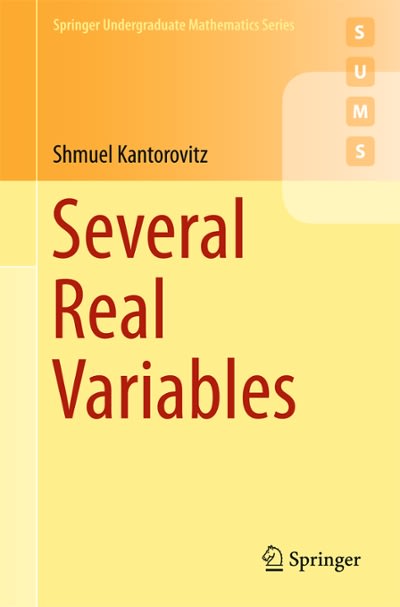Question
PLEASE HELP!! any help is appreciated (1) If the number of sales is inversely proportional to the price of a product, write the differential equation
PLEASE HELP!! any help is appreciated
(1) If the number of sales is inversely proportional to the price of a product, write the differential equation that describes the rate of change in the number of sales at a given time, t.
Do not solve.
(2)The rate of change in the number of barrels, B, of oil pumped from a field is proportional to 2,300,000 - B(t), where t is measured in years.
Write the differential equation to solve for B(t).
Do not solve.
(3)If the acceleration A(t) of an object is inversely proportional to the square root of its speed S(t); write the differential equation for the acceleration of the object.
Do not solve.
(4)If the rate of change of R is inversely proportional to R(x) where R > 0, and if R(1) = 35, and R(4) = 20, find R(0).
38.73
39.34
41.16
42.87
(5)If the rate of change of Q is directly proportional to Q, and if Q(0) = 100 and Q(4) = 440, find k, the proportionality constant.
k = 0.370
k = 1.482
k = 4.605
k = 6.087
(6)The mess in a restaurant can be measured by M(t). Assume that M(0) = 0, the restaurant starts out each month completely clean. Over time the rate of change in the mess is proportional to (100 - M). After 50 hours the restaurant had a mess index of 20. A completely messy restaurant has a value of 100.
How many hours does it take for the restaurant to have a mess index of 90?
493.89
516.27
523.75
548.31
(7)An object's height is changing at a rate inversely proportional to its height.
Does it make sense to use differential equations to model the height, H, of the object?
If so, write the differential equation. If not, explain why.
Yes,dHdt=kHdHdt=kHis a differential equation with a rate of change.
Yes,dHdt=kHdHdt=kHis a differential equation with a rate of change.
No, H = kt is a simple relationship and there is no rate of change so no need to use differential equations.
No, H=ktH=ktis a simple relationship and there is no rate of change so no need to use differential equations.
(8)Assume that a population of deer, P, is inversely proportional to the number of elk, E.
Does it make sense to use differential equations to model the population size?
If so, write the differential equation. If not, explain why.
Yes,dPdt=kEdPdt=kEis a differential equation with a rate of change.
Yes,dPdt=kEdPdt=kEis a differential equation with a rate of change.
No, P=kEP=kEis a simple relationship and there is no rate of change so no need to use differential equations.
No, P = kE is a simple relationship and there is no rate of change so no need to use differential equations.
(9)Assume that a population P of wolves in a region changes inversely to the area A of the region.
Does it make sense to use differential equations to model the population size?
If so, write the differential equation. If not, explain why.
Yes,dPdt=kAdPdt=kAis a differential equation with a rate of change.
No, P = kA is a simple relationship and there is no rate of change so no need to use differential equations.
Yes,dPdt=kAdPdt=kAis a differential equation with a rate of change.
No, P=kAP=kAis a simple relationship and there is no rate of change so no need to use differential equations.
(10)A bank pays continuous compounded interest. Jim deposits $1,000 in the account and in 10 years he has $1,250.
Write the differential equation for A(t), the amount of money in Jim's account at time t.
A(t)=1000e10tA(t)=1000e10t
A(t)=1250e0.0223tA(t)=1250e0.0223t
A(t)=1000e0.0223tA(t)=1000e0.0223t
A(t)=10e0.0223t
(11)If a population of endangered salmon, S(t), starts out with 80 fish and decreases at a rate proportional to 0.02 times the number of fish present each year, write the particular solution to the differential equation which describes the number of fish over time.
Let t be measured in years.
S(t)=80e0.02tS(t)=80e0.02t
S(t)=100e0.02tS(t)=100e0.02t
S(t)=80e0.02tS(t)=80e0.02t
S(t)=100e0.2t
(12) A boat purchased for $25,000 depreciates exponentially. After one year, the car is valued at $20,000.
How fast is the value of the boat depreciating after two years?
Decrease $3730 per year
Decrease $8001 per year
Increase $8001 per year
Increase $3730 per year
(13)The interest on an account increases exponentially.
If an initial investment of $1000 earns $120 in one year, what is the rate of increase at the end of that first year?
$126.90
$122.65
$121.53
$120.00
(14)A bacteria culture starts with 500 bacteria and grows at a rate proportional to its current size. After four hours, there are 10000 bacteria.
Find a function N(t) that represents the number of bacteria at any hour, t.
N(t)=10000e0.7489tN(t)=10000e0.7489t
N(t)=500e0.7489tN(t)=500e0.7489t
N(t)=500e0.7489tN(t)=500e0.7489t
N(t)=10000e0.7489t
Step by Step Solution
There are 3 Steps involved in it
Step: 1

Get Instant Access to Expert-Tailored Solutions
See step-by-step solutions with expert insights and AI powered tools for academic success
Step: 2

Step: 3

Ace Your Homework with AI
Get the answers you need in no time with our AI-driven, step-by-step assistance
Get Started


